The 30 Best Places to Live in Nebraska: Top Cities and Towns

Nebraska offers residents a unique combination of affordable living, strong communities, and economic stability that makes it an attractive destination for families, young professionals, and retirees alike.
The state’s diverse cities and towns provide options ranging from bustling urban centers with cultural amenities to smaller communities that emphasize rural charm and close-knit neighborhoods.
This comprehensive guide examines thirty communities across Nebraska, evaluating each location based on factors such as cost of living, educational opportunities, safety, employment prospects, and overall quality of life.
From major metropolitan areas like Omaha and Lincoln to smaller towns such as Waverly and Alma, each community offers distinct advantages that cater to different lifestyle preferences and priorities.
Here are the 30 best places to live in Nebraska:
30. Wahoo
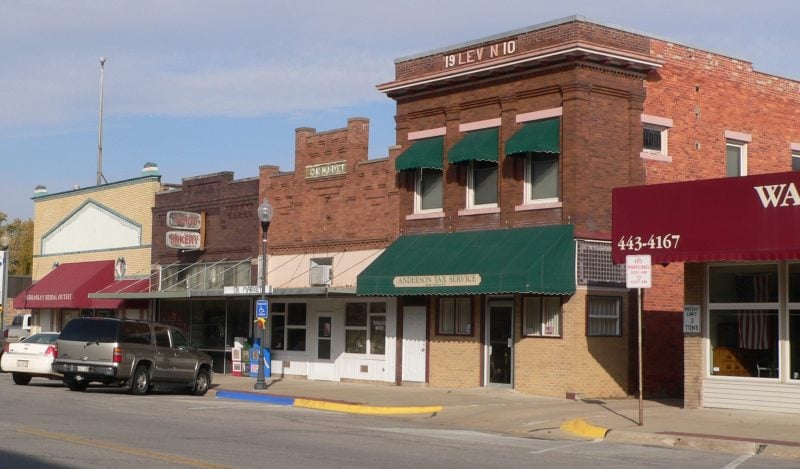
Wahoo ranks as one of Nebraska’s most affordable places to live. The city maintains a population of approximately 4,500 residents.
Housing costs remain exceptionally reasonable with a median home price of $135,500. This affordability doesn’t come at the expense of quality amenities or community features.
The poverty rate sits at 12.6%, which falls 10% below the national average. Typical households earn around $56,907 annually.
Wahoo’s downtown area offers a quaint atmosphere with farmers markets and art galleries. The city provides easy access to outdoor recreation at nearby Platte River State Park.
The community receives high livability scores, ranking 6th in Nebraska and 672nd nationally. Wahoo places in the top 10 percent of all cities for overall quality of life.
Its location in eastern Nebraska provides convenient access to larger metropolitan areas while maintaining small-town charm.
29. Lexington
Lexington ranks among Nebraska’s notable places to live, earning recognition in various state rankings. This Dawson County city has a population of approximately 10,000 residents.
The city offers affordable housing compared to Nebraska’s state average. Home prices remain below the typical state cost of $188,542.
Lexington receives a livability score of 74 out of 100 based on multiple factors. The rating considers cost of living, employment opportunities, and community amenities.
The typical household earns $55,913 annually. This falls below the national median income of $67,500.
The city maintains a poverty rate of 14.4%. This rate exceeds the national average by 3%.
Lexington attracts residents with its community atmosphere and cultural diversity. The city provides employment opportunities in agriculture and manufacturing sectors.
28. Alma

Alma offers residents an affordable housing market with home prices well below Nebraska’s state average of $188,542. The small city maintains a population of approximately 1,293 people.
The community features a poverty rate of 11.7%, which sits 16% lower than the national average. Typical households in Alma earn around $48,606 annually.
Residents enjoy a quiet atmosphere surrounded by natural beauty and outdoor recreational opportunities. The town’s streets feature pleasant homes and local businesses that serve the community.
Alma provides several educational options through its local schools. The area also includes restaurants and essential amenities that support daily life.
The community welcomes newcomers with a friendly attitude. This small Nebraska town appeals to those seeking affordable living in a peaceful rural setting.
27. Gering
Gering sits in Scotts Bluff County with a population of around 8,567 residents. The small city offers a sparse suburban atmosphere where most residents own their homes.
The town provides affordable housing options. Home prices remain below Nebraska’s state average of $188,542, making it accessible for many buyers.
Crime rates in Gering stay lower than most Nebraska communities. This creates a safer environment for families and individuals.
The poverty rate stands at 8.4%, which is 40% lower than the national average. Typical households earn $62,764 annually.
Residents enjoy proximity to attractions like Chimney Rock National Monument. The community features local parks, restaurants, and cultural venues.
The area attracts families, young professionals, and retirees. Political leanings tend to be conservative among the population.
26. David City
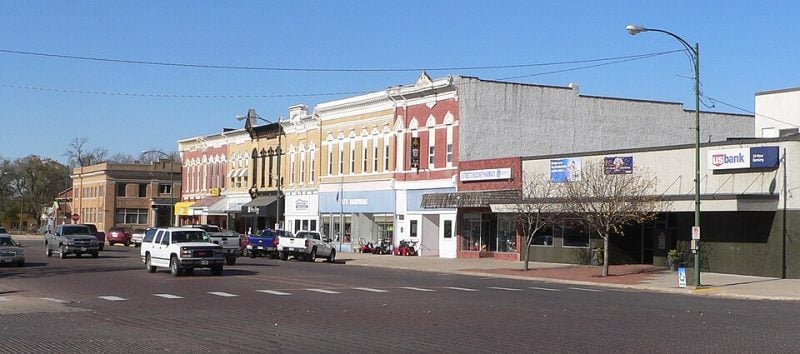
David City stands out as one of Nebraska’s most livable small towns. With a population of approximately 3,000 residents, this Butler County community offers a tight-knit suburban atmosphere.
The town maintains strong economic fundamentals. The poverty rate sits at 8.5%, which is 39% lower than the national average. The median household income reaches $55,000 annually.
David City receives high marks for livability with a score of 72 out of 100. This rating reflects favorable crime rates, reasonable cost of living, and quality weather conditions.
Housing remains affordable compared to state averages. Home prices fall below Nebraska’s median of $188,542, making homeownership accessible for most residents.
The community attracts many retirees and families seeking quality education. David City’s public schools earn high ratings from residents and education evaluators.
Downtown features local restaurants, boutique shops, and art galleries. Outdoor enthusiasts enjoy nearby trails and rivers for recreational activities.
25. Seward
Seward ranks as one of Nebraska’s top places to live with a population of 7,210 residents. The city earns a livability score of 81 out of 100 and holds the #10 position statewide.
The poverty rate stands at 9.3%, which is 34% lower than the national average. Typical households earn $66,190 annually, closely matching national median income levels.
Housing costs align with Nebraska’s state average of $188,542. The real estate market reflects stable pricing throughout the community.
Seward offers quality public schools that provide excellent education for local children. Parks and trails throughout the city support outdoor recreation and fitness activities.
The downtown area features local shops and restaurants for residents. Crime rates remain low, contributing to the city’s family-friendly reputation and overall safety rating.
24. Falls City
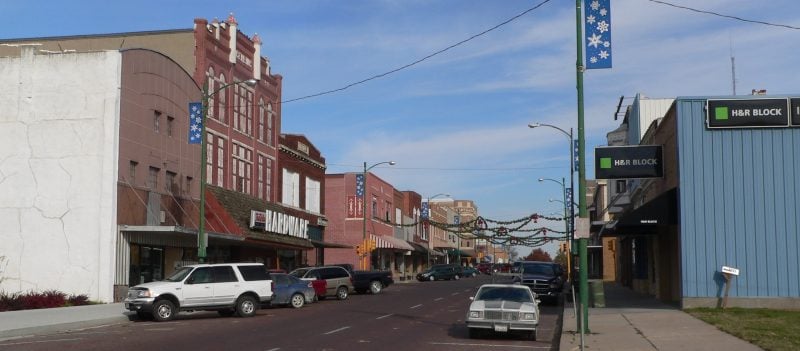
Falls City is a small town in southeastern Nebraska with a population of approximately 4,100 residents. Located in Richardson County, this community offers an affordable cost of living that ranks among the lowest in the United States.
The town provides residents with a rural atmosphere where most people own their homes. Falls City attracts families, young professionals, and retirees who prefer a quieter lifestyle away from urban areas.
Housing costs in Falls City remain below Nebraska’s state average of $188,542. This affordability makes homeownership accessible for many residents seeking reasonable real estate prices.
The community features parks and green spaces that allow residents to enjoy outdoor activities throughout the year. Falls City experiences a four-season climate typical of the Great Plains region.
The median household income in Falls City is $42,750, which falls below the national average. The poverty rate stands at 15.2%, slightly higher than national figures.
23. Chadron
Chadron stands out as one of Nebraska’s most livable communities with a population of approximately 5,200 residents. The town offers a sparse suburban atmosphere where most residents own their homes.
Located in Dawes County, Chadron attracts young professionals seeking quality small-town living. The community maintains a strong sense of togetherness while providing access to natural beauty throughout the region.
Housing costs remain affordable compared to state averages. The median home value sits at $132,700, making homeownership accessible for many families.
Chadron ranks highly for its public school system, placing fourth among Nebraska communities for educational quality. The town earned recognition as the fifth best place to live statewide.
The poverty rate of 12.7% falls below the national average. Median household income reaches $48,344, supporting a comfortable lifestyle for residents in this charming Midwest community.
22. North Platte

North Platte sits in Lincoln County in the heart of Nebraska’s Great Plains region. The city serves as home to approximately 23,000 to 25,000 residents who enjoy a dense suburban atmosphere.
Most residents own their homes in North Platte. The community attracts many families seeking a stable residential environment with conservative values.
The city offers multiple museums that celebrate local history and regional culture. Public parks and recreational trails provide outdoor activities for residents of all ages.
Coffee shops are abundant throughout North Platte. These establishments contribute to the community’s social fabric and gathering spaces.
Housing quality varies significantly across different neighborhoods in the city. The real estate market reflects this disparity through varying home values and neighborhood characteristics.
North Platte provides residents with access to essential amenities and services. The location in central Nebraska offers convenient access to both urban resources and rural landscapes.
21. Beatrice
Beatrice serves as the county seat of Gage County and offers residents affordable living with housing costs significantly below state averages. The city sits near the Platte River, providing outdoor recreation opportunities including fishing, canoeing, and kayaking.
The community maintains a tight-knit, rural atmosphere that appeals to families seeking small-town living. Cost of living runs approximately 23% lower than national averages, making it an attractive option for budget-conscious residents.
Beatrice ranks #30 among Nebraska cities for livability with a score of 78 out of 100. The local job market provides reasonable employment opportunities within the metro area.
Housing options remain diverse and accessible compared to larger Nebraska cities. The area includes multiple zip codes spanning Beatrice proper and surrounding communities like Blue Springs and Wymore.
Educational facilities serve local families, though amenities receive lower ratings compared to urban areas.
20. Plattsmouth

Plattsmouth sits along the Missouri River in Cass County with approximately 6,400 residents. The city offers a picturesque riverfront and well-preserved historic downtown area.
The community maintains a poverty rate of 10%, which falls significantly below the national average. However, the median household income of $50,680 trails behind Nebraska’s overall figures.
Plattsmouth receives recognition for its school system, earning an average rating of 4. The city also maintains a crime index of 73, placing it below both metro and national averages.
Residents benefit from reasonable commute times to nearby employment centers. The drive to University of Nebraska Medical Center averages 25 minutes.
Housing costs exceed Nebraska’s state average of $188,542. The city attracts families seeking small-town living with access to larger metropolitan amenities in the Omaha area.
19. McCook
McCook ranks as one of Nebraska’s better places to live with a population of 7,360 residents. The town sits in Red Willow County and offers a sparse suburban atmosphere.
Most residents own their homes rather than rent. The community attracts many retirees who appreciate the quieter pace of life.
Housing costs remain below Nebraska’s state average of $188,542. This affordability makes McCook accessible for various income levels.
The town features numerous parks for outdoor recreation. Residents enjoy activities like hiking, fishing, and golfing in the surrounding area.
McCook’s public schools perform above average compared to other Nebraska districts. This quality education system appeals to families with children.
The community maintains a strong sense of togetherness typical of small rural towns. Political views tend to lean conservative among the resident population.
18. York

York is a small city in south-central Nebraska with approximately 8,000 residents. The community combines rural charm with modern conveniences.
The downtown area features various shops, restaurants, and essential services. Housing costs remain below Nebraska’s state average of $188,542.
Residents enjoy access to outdoor recreation through nearby state parks and local lakes. The area offers hiking trails and fishing opportunities.
York ranks fifth among Nebraska’s best places to live according to recent studies. The city maintains a poverty rate of 8.9%, which is 36% lower than the national average.
The typical household earns $58,125 annually. This income level supports a comfortable lifestyle in the area’s affordable housing market.
York attracts families, retirees, and young professionals seeking small-town living. The community provides strong local ties while maintaining access to urban amenities.
17. Norwalk
Norwalk offers residents a quiet small-town atmosphere in the heart of Nebraska’s agricultural region. The community maintains a tight-knit feel where neighbors know each other and local businesses play central roles in daily life.
Housing costs in Norwalk remain affordable compared to larger Nebraska cities. The town provides essential amenities while keeping living expenses manageable for families and retirees.
The area’s economy centers around agriculture and related industries. Local farms and agricultural businesses provide steady employment opportunities for residents who prefer working close to home.
Norwalk’s location allows easy access to larger cities when needed. Residents can enjoy the benefits of small-town living while remaining connected to regional employment and entertainment options.
The community hosts local events that bring residents together throughout the year. These gatherings help maintain the social fabric that makes small Nebraska towns appealing to many families.
16. Holdrege
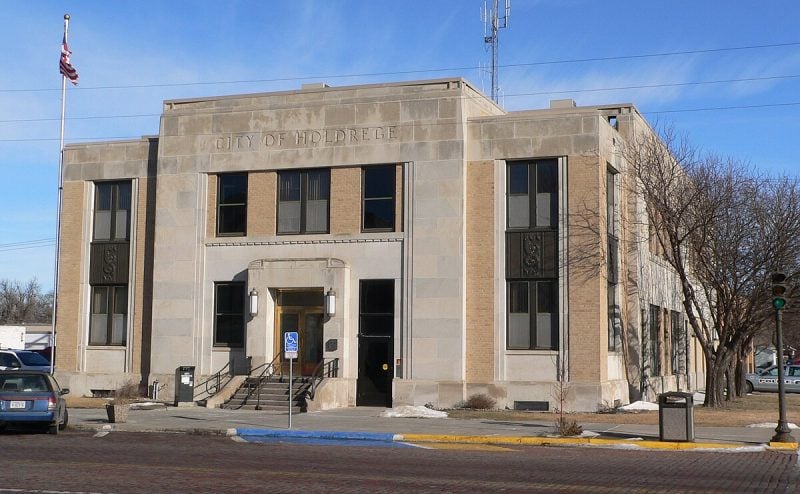
Holdrege ranks as the second most livable community in Nebraska according to the AARP Livability Index. The city receives a livability score of 85 out of 100 and holds the #2 position statewide.
This small city houses just over 5,000 residents, creating an intimate community atmosphere. The population size appeals to those who prefer smaller town living over urban environments.
Housing costs in Holdrege remain below Nebraska’s state average of $188,542. This affordability factor makes homeownership more accessible for residents.
Education levels in Holdrege are notably high, with approximately 90% of adults aged 25 or older having completed high school or higher education. The city scores 8 out of 10 for education level rankings.
The AARP index evaluates multiple factors including housing, transportation, neighborhood elements, environment, health services, and community engagement when determining livability scores.
15. Scottsbluff
Scottsbluff sits in western Nebraska’s Scotts Bluff County, offering residents a blend of small-town charm and cultural attractions. The city serves as a regional hub for the North Platte River Valley.
Home prices in Scottsbluff remain below Nebraska’s state average of $188,542. This affordability makes the area attractive for first-time buyers and families seeking value.
The city features notable attractions including the Boot Hill Museum and Legacy of the Plains Museum. The Riverside Discovery Center provides educational opportunities for residents and visitors.
Scottsbluff benefits from its proximity to neighboring communities like Gering and Mitchell. These connections create a larger metropolitan feel while maintaining small-town accessibility.
Outdoor recreation opportunities abound in the area. The surrounding landscape offers hiking, fishing, and camping options for nature enthusiasts.
14. Alliance
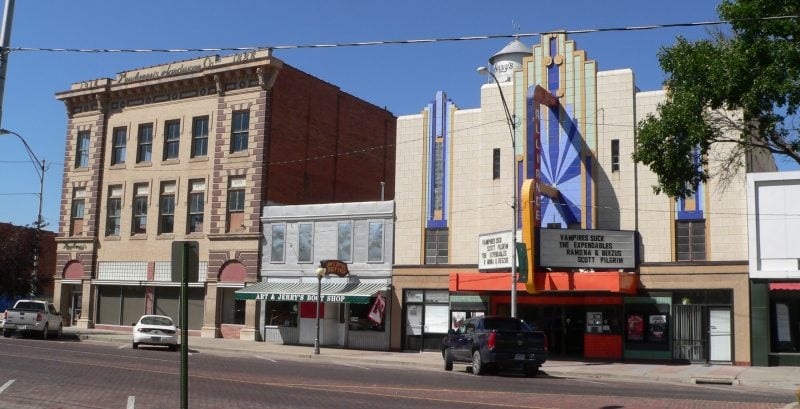
Alliance offers residents an affordable lifestyle in western Nebraska with a population of approximately 8,400 people. The city ranks in the top third of all US cities for livability with a score of 70 out of 100.
Housing costs remain attractive with a median home price of $153,300. This falls well below Nebraska’s state average of $188,542, making homeownership accessible for many families.
The local economy supports households with a median income of $57,898 annually. Alliance maintains a poverty rate of 13.3%, which sits 5% lower than the national average.
Alliance ranks 10th out of 52 Nebraska cities for lowest cost of living. The city also places 20th out of 52 for diversity among Nebraska communities.
Recent market data shows home values have appreciated 10.5% over the past year, indicating steady growth for property owners.
13. Waverly
Waverly stands out as one of Nebraska’s premier small towns with a population of 4,363 residents. The community offers a rural atmosphere while maintaining convenient access to urban amenities.
Located in Lancaster County, Waverly provides residents with numerous parks and recreational opportunities. Most residents own their homes, contributing to the town’s stable community feel.
The area attracts both families and young professionals seeking quality living outside major metropolitan areas. Public schools in Waverly perform above average, making it appealing for families with children.
Home prices in Waverly exceed Nebraska’s state average of $188,542, reflecting the desirability of the location. The town earned recognition as one of the best small towns in Nebraska for 2024.
Waverly receives high livability ratings, ranking fourth in Nebraska with a score of 84 out of 100. The community balances small-town charm with modern conveniences and quality services.
12. Blair
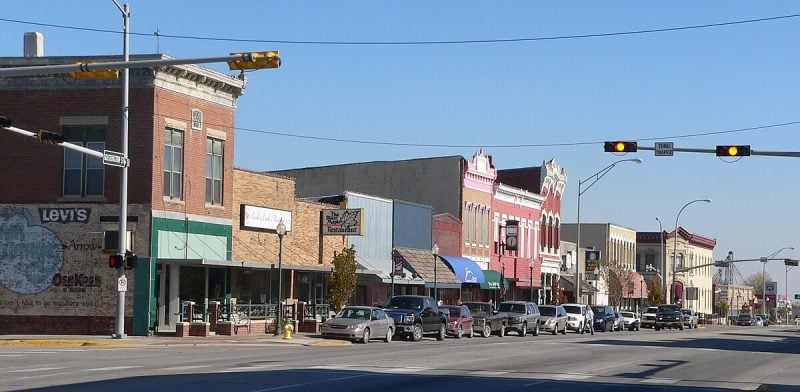
Blair offers residents a small-town atmosphere with easy access to larger metropolitan areas. The city maintains a population of approximately 7,830 people, creating a close-knit community environment.
The median household income in Blair reaches $57,274 annually. This figure falls below the national median but reflects the area’s lower cost of living compared to major urban centers.
Blair’s poverty rate stands at 13.6%, which is three percentage points lower than the national average. This indicates relatively stable economic conditions for residents.
Home prices in Blair exceed Nebraska’s state average of $188,542. The higher real estate values suggest desirable neighborhoods and strong market demand within the community.
The city provides access to local schools, community amenities, and recreational opportunities. Blair’s location offers residents convenience while maintaining a quieter residential setting away from urban congestion.
11. Papillion
Papillion ranks as a top destination in Nebraska with a population of approximately 24,000 residents. The city consistently appears on national “Best Places to Live” lists due to its exceptional quality of life.
Located in Sarpy County, Papillion offers residents a dense suburban atmosphere. Most residents own their homes, creating stable neighborhoods throughout the community.
The city provides excellent educational opportunities with top-notch schools that attract families. Safety stands out as a key feature, with low crime rates contributing to its desirability.
Papillion’s proximity to Omaha creates significant employment advantages. Residents enjoy a 15-minute commute to major employers in financial services and healthcare sectors.
Local economic growth continues with major companies relocating headquarters to the area. Black Hills Energy and Nebraska’s largest credit union recently established operations in Papillion.
The community features numerous parks and coffee shops that enhance daily living. Home values exceed the Nebraska state average, reflecting strong market demand and neighborhood desirability.
10. La Vista
La Vista stands out as one of Nebraska’s premier suburban communities. This Sarpy County city houses over 16,000 residents in the Omaha metropolitan area.
The community offers a dense suburban atmosphere where most residents own their homes. Families particularly appreciate the numerous parks and recreational facilities throughout the city.
La Vista provides excellent access to outdoor activities. Several state parks sit nearby, along with multiple public golf courses for recreation enthusiasts.
The city features strong economic opportunities and infrastructure. Shopping centers, restaurants, and attractions like the La Vista Aquatic Center serve residents’ daily needs.
Financial stability marks the community well. The typical household earns $70,184 annually, which exceeds the national median income of $67,500.
La Vista maintains a low poverty rate of 5.4%. This figure sits 61% below the national average, indicating economic health across the population.
9. Columbus
Columbus serves as the county seat of Platte County and offers residents a blend of small-city charm with practical amenities. The city provides multiple recreational trails suitable for biking and jogging throughout the community.
Platte River State Park sits nearby, delivering outdoor recreation opportunities and scenic views for nature enthusiasts. The location gives residents access to both urban conveniences and natural attractions.
Housing quality varies significantly across different neighborhoods within Columbus. The real estate market reflects this diversity, with home values serving as indicators of neighborhood desirability.
Columbus maintains a quieter pace of life compared to Nebraska’s larger metropolitan areas. The city’s size allows for a close-knit community atmosphere while still providing essential services and local businesses.
The area attracts people seeking a peaceful living environment with access to outdoor activities. Columbus combines small-town living with reasonable access to regional amenities and employment opportunities.
8. Norfolk
Norfolk stands as a welcoming small city in north-central Nebraska with approximately 24,000 residents. The community offers a balanced mix of outdoor recreation and cultural attractions that appeal to diverse lifestyles.
The city features several state parks nearby, providing excellent opportunities for camping, hiking, and wildlife viewing. Downtown Norfolk maintains a charming district with various dining options and entertainment venues.
Housing costs remain reasonable compared to national averages, though the median household income of $49,280 falls below the national median. The poverty rate sits at 16 percent, which is higher than the national average.
Norfolk ranks favorably among Nebraska communities for young professionals and maintains one of the lower costs of living in the state. The city’s location in Madison County provides access to both rural recreation and urban amenities.
Cultural offerings include the Norfolk Arts Center, adding vibrancy to the local entertainment scene.
7. Hastings
Hastings ranks as one of Nebraska’s top places to live, with a population of approximately 24,500 residents. The city consistently earns high marks for quality of life, affordability, and safety.
Located in Adams County, Hastings offers diverse attractions including museums, restaurants, and golf courses. The city features extensive bike trails and shopping centers for residents to enjoy.
Housing costs remain below the state average of $188,542, making homeownership accessible. This affordability contributes to Hastings’ appeal among young professionals and families.
The city ranks 18th out of 52 for diversity in Nebraska. It also places 21st among the best locations for young professionals statewide.
Historical sites like Nelson Memorial Park add cultural value to the community. These attractions complement the city’s modern amenities and recreational opportunities.
6. Fremont
Fremont ranks as the 4th best city to live in Nebraska according to quality of life measures. The city maintains a population of approximately 26,000 residents in Dodge County.
Located just 50 minutes northwest of downtown Omaha, Fremont offers small-town charm with access to metropolitan amenities. Residents enjoy local character while remaining close to major shopping and entertainment options.
The city demonstrates strong safety credentials with crime rates significantly below national averages. Fremont ranks in the top 5% for safety among comparable communities.
Economic conditions remain stable with a poverty rate of 12.3%, which sits 12% lower than the national average. The typical household earns around $54,291 annually.
Fremont receives a livability score of 74 out of 100, ranking it 78th within Nebraska. The scoring considers factors like amenities, employment opportunities, and health services.
5. Kearney
Kearney ranks as the third best place to live in Nebraska. This central Nebraska city combines urban amenities with rural charm.
The community has a population of approximately 34,000 residents. Most people own their homes in this dense suburban environment.
Kearney offers excellent educational opportunities anchored by the University of Nebraska at Kearney. The city maintains strong community spirit and commitment to quality of life.
Residents enjoy numerous parks including Cottonmill Lake State Recreation Area and Yanney Heritage Park. The area features many bars, coffee shops, and recreational facilities.
Home prices exceed the state average of $188,542. The typical household earns $60,755 annually, which is below the national median.
The poverty rate stands at 14.7%, about 5% higher than the national average. Kearney attracts families, professionals, and retirees seeking a balanced lifestyle.
4. Grand Island
Grand Island ranks as Nebraska’s fourth largest city, combining rural charm with urban conveniences. The metro area offers residents a welcoming community with strong historical roots and a robust local economy.
Housing costs remain affordable compared to national averages. The city provides diverse neighborhood options with varying home values and quality of life indicators.
Winter brings an average of 26.5 inches of snow annually, typical for Nebraska. February sees the heaviest snowfall with 5.9 inches.
The area scores well in quality of life metrics, cost of living, and educational opportunities. Crime rates tend to be lower in more desirable neighborhoods, creating safer residential environments.
Grand Island features vibrant community life with outdoor recreational opportunities. The local economy provides stable employment options for residents across various industries.
3. Bellevue
Bellevue holds the distinction of being Nebraska’s oldest city and has earned recognition from Money Magazine as the best place to live in the state. Located in Sarpy County, this vibrant community offers residents access to quality schools and safe neighborhoods.
The city features several desirable residential areas. Fontenelle Forest neighborhood attracts outdoor enthusiasts with its proximity to the nature preserve. Two Springs offers newer housing developments with various options for families.
Olde Towne provides historic charm through its older homes and strong community feel. Quail Creek features larger properties for those seeking more space.
Bellevue provides numerous recreational opportunities including the Strategic Air Command and Aerospace Museum. Residents enjoy outdoor activities at Fontenelle Forest Nature Center and nearby Mahoney State Park.
The city maintains a high quality of life through its combination of educational opportunities, outdoor recreation, and community amenities.
2. Lincoln
Lincoln serves as Nebraska’s capital city and stands as the state’s second-largest urban center. The city combines government functions with a thriving university atmosphere centered around the University of Nebraska-Lincoln.
The historic Haymarket District anchors downtown Lincoln with its collection of shops, restaurants, and cultural venues. This area provides walkable entertainment and dining options for residents and visitors.
Lincoln’s economy benefits from stable government employment and the university’s presence. The city maintains lower unemployment rates compared to national averages while offering competitive salaries.
Several established neighborhoods define Lincoln’s residential landscape. Woods Park provides central location near the university campus. Wilderness Hills features newer developments in south Lincoln with modern amenities.
The city offers extensive parks and recreational facilities throughout its boundaries. Lincoln Children’s Zoo and various green spaces provide family-friendly activities year-round.
Cost of living remains below national averages while maintaining access to urban amenities and services.
1. Omaha
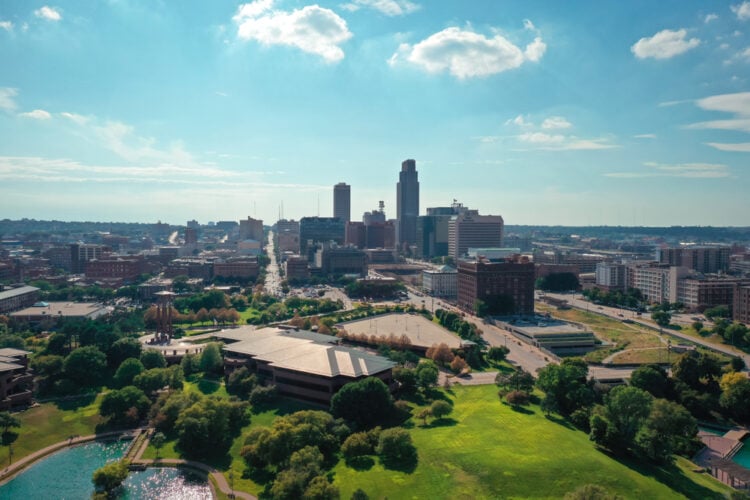
Omaha stands as Nebraska’s largest city and economic powerhouse. The city sits along the Missouri River and serves as a major business hub for the Midwest region.
The metro area offers diverse neighborhoods from downtown districts to suburban communities. Popular areas include Dundee, Fairacres, Elkhorn, and Papillion.
Residents enjoy access to world-class attractions like the Henry Doorly Zoo. The city maintains a strong arts scene and varied dining options throughout different districts.
Omaha provides solid employment opportunities across multiple industries. Warren Buffett calls the city home, reflecting its business-friendly environment.
Housing costs remain reasonable compared to coastal cities. The area features good public schools and low crime rates in many neighborhoods.
Memorial Park and other green spaces offer outdoor recreation. The city combines urban amenities with Midwestern affordability and quality of life.
Understanding Nebraska’s Quality of Life
Nebraska offers residents a compelling combination of affordable living costs, four-season climate patterns, and strong healthcare infrastructure. The state consistently ranks among the top half of U.S. states for overall livability while maintaining lower expenses than coastal regions.
Cost of Living Insights
Nebraska’s median home price stands at $205,200, significantly below the national average. Home appreciation has increased 11.8% over the past year, indicating a healthy but manageable housing market.
The state ranks as the 46th most expensive in the nation, making it an attractive option for budget-conscious residents. Housing costs typically consume a smaller percentage of income compared to metropolitan areas on the East and West coasts.
Key Cost Advantages:
-
Lower property taxes than neighboring states
-
Reduced utility costs due to energy production
-
Affordable groceries and everyday expenses
-
Minimal state income tax burden
More than 30% of Nebraska’s population lives in cities with quality of life scores exceeding 70 out of 100. This indicates residents receive substantial value for their housing and living expenses.
Climate and Natural Landscapes
Nebraska experiences a continental climate with four distinct seasons. Summers typically reach 80-90°F, while winters average 20-30°F with moderate snowfall.
The state receives approximately 25-30 inches of annual precipitation, supporting agricultural activities and maintaining green spaces. Spring and fall offer mild temperatures ideal for outdoor activities.
Natural Features:
-
Extensive park systems in major cities
-
Miles of recreational trails
-
Rolling plains and agricultural landscapes
-
Sandhills region for outdoor recreation
Lincoln boasts more parks and trails per capita than most American cities. The terrain varies from flat agricultural land in the east to the unique Sandhills ecosystem in the north-central region.
Healthcare and Safety
Nebraska maintains lower crime rates than the national average, particularly in smaller cities and suburban areas. Most communities report minimal violent crime and property crime statistics.
The state’s healthcare system includes regional medical centers and specialized facilities. Nebraska Medicine and CHI Health provide comprehensive services across multiple locations.
Safety Indicators:
-
Below-average violent crime rates
-
Strong emergency response systems
-
Well-funded police and fire departments
-
Active community safety programs
Healthcare accessibility remains strong in urban areas, though rural regions may have limited specialist availability. The state invests in telemedicine and regional healthcare networks to address geographic challenges.
Key Factors for Choosing a Community
Nebraska communities vary significantly in their educational offerings, employment prospects, and cultural amenities. These three elements shape daily life and long-term satisfaction for residents across the state.
Education and School Systems
School quality ranks among the top priorities for families selecting a Nebraska community. Districts like Papillion-La Vista and Millard consistently earn high ratings for academic performance and graduation rates.
Key educational metrics to evaluate:
-
Standardized test scores compared to state averages
-
Student-to-teacher ratios
-
Advanced Placement course availability
-
College enrollment rates among graduates
Rural Nebraska districts often provide smaller class sizes and individualized attention. Urban areas typically offer more specialized programs, including STEM academies and arts programs.
Private school options concentrate in larger cities like Omaha and Lincoln. These communities also house the state’s major universities, creating educational resources and cultural opportunities.
Parents should research specific school boundaries, as quality can vary significantly between districts within the same metropolitan area.
Job Market and Economic Opportunities
Employment opportunities differ dramatically across Nebraska’s communities. Omaha serves as the state’s economic hub with major corporations and diverse industries.
Primary employment sectors include:
-
Agriculture and food processing
-
Healthcare and medical services
-
Financial services and insurance
-
Manufacturing and logistics
Smaller communities often depend on single industries or agricultural operations. This creates economic stability in good times but vulnerability during downturns.
Unemployment rates remain low statewide, typically below national averages. However, wage levels vary considerably between metropolitan and rural areas.
Professional opportunities concentrate in Omaha and Lincoln. These cities offer career advancement potential and higher salaries across multiple industries.
Remote work capabilities have expanded options for some residents in smaller communities. High-speed internet availability becomes crucial for these arrangements.
Community Culture and Activities
Cultural amenities and recreational opportunities significantly impact quality of life. Larger Nebraska cities provide theaters, museums, and professional sports teams.
Small towns often center around community events, local festivals, and outdoor recreation. Many feature well-maintained parks, golf courses, and walking trails.
Cultural considerations include:
-
Arts venues and performance spaces
-
Restaurant diversity and nightlife options
-
Sports and fitness facilities
-
Community organizations and volunteer opportunities
Nebraska’s agricultural heritage influences many community celebrations and traditions. County fairs, harvest festivals, and rodeos remain popular statewide.
Outdoor enthusiasts find abundant opportunities for hunting, fishing, and hiking. State parks and recreational areas provide accessible options near most communities.
Religious organizations play significant roles in many Nebraska towns. Church involvement often extends beyond worship to community service and social activities.





